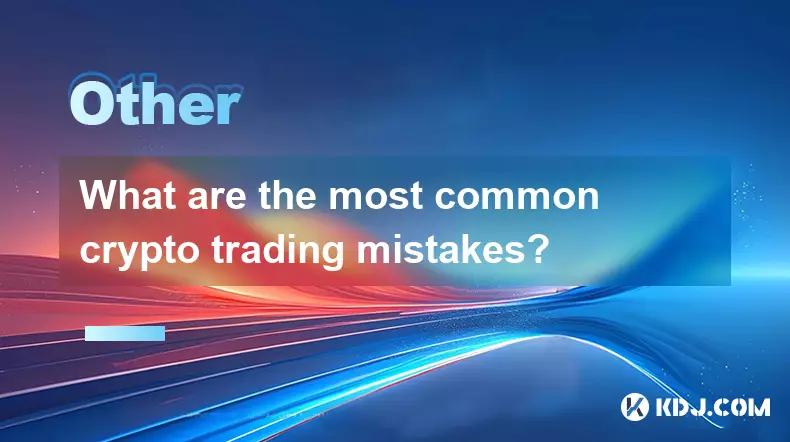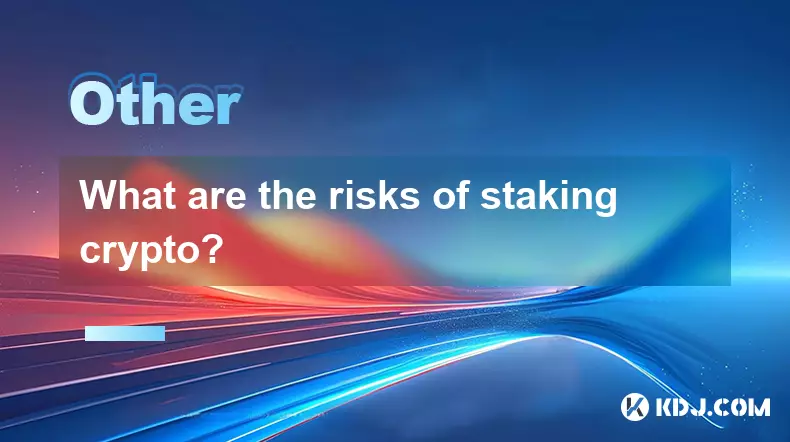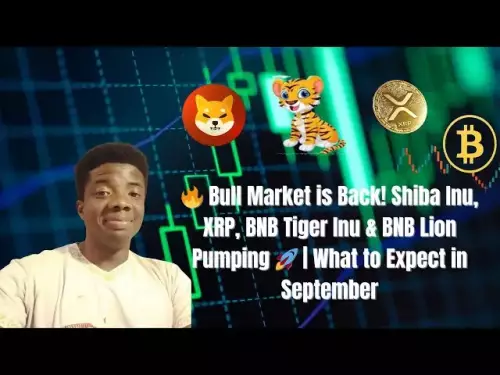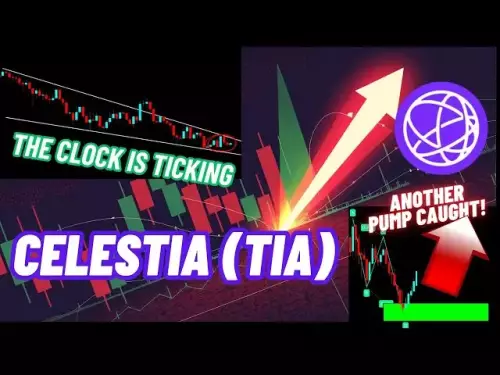-
 Bitcoin
Bitcoin $108100
-0.53% -
 Ethereum
Ethereum $4406
-0.85% -
 Tether USDt
Tether USDt $0.0000
0.00% -
 XRP
XRP $2.736
-3.29% -
 BNB
BNB $854.1
-0.62% -
 Solana
Solana $199.2
-2.23% -
 USDC
USDC $0.9998
-0.01% -
 TRON
TRON $0.3379
-1.08% -
 Dogecoin
Dogecoin $0.2113
-2.94% -
 Cardano
Cardano $0.8044
-2.83% -
 Chainlink
Chainlink $22.94
-3.31% -
 Hyperliquid
Hyperliquid $44.27
-1.09% -
 Ethena USDe
Ethena USDe $1.001
0.03% -
 Sui
Sui $3.192
-3.56% -
 Stellar
Stellar $0.3491
-3.11% -
 Bitcoin Cash
Bitcoin Cash $534.3
-2.79% -
 Avalanche
Avalanche $23.11
-3.16% -
 Cronos
Cronos $0.2785
-5.59% -
 Hedera
Hedera $0.2141
-4.96% -
 UNUS SED LEO
UNUS SED LEO $9.590
0.14% -
 Litecoin
Litecoin $108.6
-2.13% -
 Toncoin
Toncoin $3.130
-0.08% -
 Shiba Inu
Shiba Inu $0.00001204
-2.84% -
 Polkadot
Polkadot $3.711
-2.52% -
 Uniswap
Uniswap $9.469
-3.39% -
 Dai
Dai $0.9999
0.00% -
 Bitget Token
Bitget Token $4.511
-1.41% -
 Monero
Monero $263.9
0.15% -
 Aave
Aave $310.7
-3.13% -
 Ethena
Ethena $0.6331
-6.76%
What are the most common crypto trading mistakes?
Emotional impulses lead to overtrading, causing higher fees and losses as fear and FOMO override disciplined strategies.
Aug 31, 2025 at 06:36 pm

Overtrading Due to Emotional Impulses
1. Traders often enter and exit positions too frequently, driven by fear of missing out or panic during market dips. This behavior leads to higher transaction fees and reduced overall profitability.
2. Emotional decisions override logical strategies, especially when traders react impulsively to short-term price movements without considering long-term trends or technical indicators.
3. Many newcomers fail to set predefined entry and exit points, making them vulnerable to sudden market swings and herd mentality.
4. Overtrading is amplified during periods of high volatility, where rapid price changes create a false sense of opportunity, pushing traders to act without proper analysis.
5. The absence of a disciplined trading plan results in inconsistent performance and increased exposure to avoidable risks.
Ignoring Risk Management Principles
1. A significant number of traders allocate too much capital to a single trade, risking substantial losses if the market moves against them.
2. Failure to use stop-loss orders is a widespread issue, leaving positions exposed to sudden downturns without automated protection.
3. Position sizing is often neglected, with traders not calculating the appropriate stake based on their total portfolio size and risk tolerance.
4. Diversification across different assets and blockchains is frequently overlooked, increasing vulnerability to sector-specific crashes or exploits.
5. Many traders do not track their risk-reward ratios, leading to scenarios where potential losses outweigh possible gains over time.
Misinterpreting Market Signals
1. Relying solely on social media sentiment or influencer opinions can mislead traders into making decisions not grounded in data.
2. Technical analysis tools are often misapplied, with traders using indicators like RSI or MACD without understanding their limitations or context.
3. Confirmation bias causes traders to focus only on information that supports their existing beliefs, ignoring contradictory signals.
4. Chasing pumps based on volume spikes without verifying the underlying cause—such as exchange listings or project updates—leads to buying at peaks.
5. Misreading on-chain data, such as whale movements or exchange inflows, results in false assumptions about market direction.
Falling for Scams and Fake Projects
1. Investors are frequently lured by promises of high returns from anonymous teams or projects with no working product.
2. Pump-and-dump schemes thrive in low-cap altcoin communities, where coordinated groups manipulate prices before exiting en masse.
3. Fake airdrops and phishing websites mimic legitimate platforms, tricking users into revealing private keys or seed phrases.
4. Rug pulls in decentralized finance occur when developers remove liquidity from a token pool, rendering the asset worthless overnight.
5. Lack of due diligence on whitepapers, code audits, and team credibility increases the likelihood of investing in fraudulent ventures.
Common Questions About Crypto Trading Errors
What happens when a trader doesn't use a stop-loss?Without a stop-loss, a trader remains fully exposed to downward price movements. A sudden drop can erase gains or even lead to complete loss of investment, especially in leveraged positions.
Why do new traders lose money quickly?New traders often lack experience in reading charts, managing emotions, and assessing project fundamentals. They tend to follow hype, invest impulsively, and fail to secure their assets properly.
How does social media influence poor trading decisions?Platforms like Twitter and Telegram amplify FOMO and fear, spreading unverified rumors and coordinated narratives. Traders influenced by these channels may buy or sell based on misinformation.
Can over-diversification also be a mistake?Yes. While diversification reduces risk, holding too many low-quality assets spreads attention too thin and increases exposure to obscure, high-risk tokens that may fail or be delisted.
Disclaimer:info@kdj.com
The information provided is not trading advice. kdj.com does not assume any responsibility for any investments made based on the information provided in this article. Cryptocurrencies are highly volatile and it is highly recommended that you invest with caution after thorough research!
If you believe that the content used on this website infringes your copyright, please contact us immediately (info@kdj.com) and we will delete it promptly.
- Memecoins September 2025 Watchlist: What's Hot Now?
- 2025-08-31 23:25:15
- Eric Trump Predicts Bitcoin to $1 Million: Hype or Reality?
- 2025-08-31 23:25:15
- BlockDAG: Redefining Scalability and ROI Potential in 2025
- 2025-08-31 23:05:16
- Ozak AI, Altcoins, and 20x Potential: Navigating the Crypto Landscape
- 2025-09-01 00:05:12
- Bonk Price, Solana Meme Coin, and the Rise of Layer Brett: A New Era?
- 2025-08-31 21:25:12
- ETH Transactions Soar, BTC Whale Shifts Gears: Decoding August's Crypto Charts
- 2025-08-31 21:05:16
Related knowledge

What are the risks of staking crypto?
Aug 30,2025 at 10:01pm
Risks Associated with Cryptocurrency Staking1. Market volatility can severely impact staked assets. The value of cryptocurrencies is highly unpredicta...

What is the difference between a utility token and a security token?
Sep 01,2025 at 07:36am
Understanding Utility Tokens in the Cryptocurrency Ecosystem1. Utility tokens are digital assets designed to provide users with access to a specific p...

What is the Howey Test and its relevance to crypto?
Aug 31,2025 at 06:00am
Understanding the Howey Test in Financial Regulation1. The Howey Test originated from a 1946 U.S. Supreme Court case, SEC v. W.J. Howey Co., which est...

What are the main use cases for stablecoins?
Aug 30,2025 at 03:41am
Main Use Cases for Stablecoins 1. Stablecoins serve as a reliable medium of exchange in volatile cryptocurrency markets. Traders often convert their h...

How to spot a crypto phishing scam?
Sep 01,2025 at 09:19am
Understanding the Anatomy of Crypto Phishing Scams1. Cybercriminals often design phishing scams to mimic legitimate cryptocurrency platforms, wallets,...

What is a "vampire attack" in DeFi?
Aug 29,2025 at 09:36pm
Understanding the Concept of Vampire Attacks in DeFi1. A vampire attack in the decentralized finance (DeFi) space refers to a strategic effort by one ...

What are the risks of staking crypto?
Aug 30,2025 at 10:01pm
Risks Associated with Cryptocurrency Staking1. Market volatility can severely impact staked assets. The value of cryptocurrencies is highly unpredicta...

What is the difference between a utility token and a security token?
Sep 01,2025 at 07:36am
Understanding Utility Tokens in the Cryptocurrency Ecosystem1. Utility tokens are digital assets designed to provide users with access to a specific p...

What is the Howey Test and its relevance to crypto?
Aug 31,2025 at 06:00am
Understanding the Howey Test in Financial Regulation1. The Howey Test originated from a 1946 U.S. Supreme Court case, SEC v. W.J. Howey Co., which est...

What are the main use cases for stablecoins?
Aug 30,2025 at 03:41am
Main Use Cases for Stablecoins 1. Stablecoins serve as a reliable medium of exchange in volatile cryptocurrency markets. Traders often convert their h...

How to spot a crypto phishing scam?
Sep 01,2025 at 09:19am
Understanding the Anatomy of Crypto Phishing Scams1. Cybercriminals often design phishing scams to mimic legitimate cryptocurrency platforms, wallets,...

What is a "vampire attack" in DeFi?
Aug 29,2025 at 09:36pm
Understanding the Concept of Vampire Attacks in DeFi1. A vampire attack in the decentralized finance (DeFi) space refers to a strategic effort by one ...
See all articles

























































































